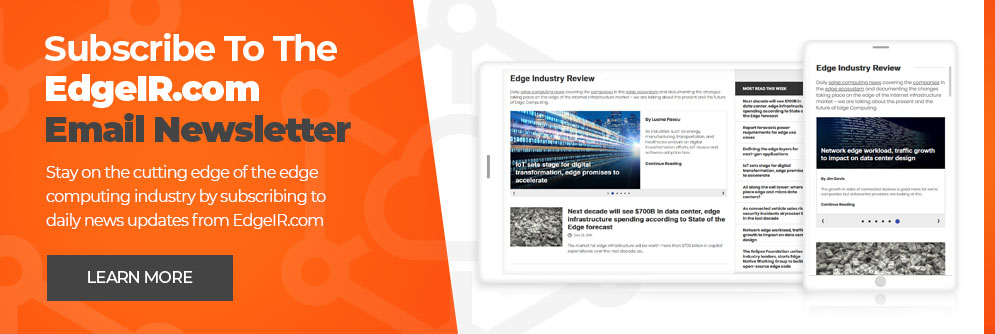Adapting cybersecurity for the era of digital transformation

By Chris Forte, president and CEO of Olmec Systems
Digital transformation has many benefits, but cybersecurity risk is a very real downside that needs to be considered. Market research firms like Gartner have noted that digital businesses can potentially suffer from major service failures if security teams don’t conduct effective digital risk management.
IT decision-makers are aware of the problem; the 2021 State of Digital Transformation survey from Altimeter revealed that cybersecurity is the top consideration in digital transformation efforts and is the biggest investment priority going into 2022 (43% of respondents), compared to cloud at 36%.
The fact is that digital transformation initiatives must keep cybersecurity as an immediate strategic focus.
If you want your business to run end-to-end on digital technologies where the customer experience is a direct result of their digital interaction and employee productivity levels depend on uninterrupted access to applications and data, you need a secure IT architecture.
An IT architecture framework needs to have security as a central tenet in every aspect of the business. This is particularly true as companies across the globe are gearing up to be primarily and strategically data-driven organizations, irrespective of their particular industry or niche. As data structures get more and more decentralized in organizations, effective security must cover the tracks of data wherever it goes, and however long it stays there. Businesses need continuous monitoring and 360-degree visibility of the data to ensure that there is no unauthorized access or abuse of privileged information.
Top emerging cybersecurity threats in the era of Digital Transformation
Phishing-based cyber-attacks
Phishing emails used to be primarily lower-level scams intended to dupe only the most unwary of users. But phishing-based cyber-attacks have evolved to become one of the reigning cyber threats in the world today. Phishing methodologies have evolved from basic email body content containing misleading, malicious links and camouflaged information intended to compromise users into divulging sensitive information to recent AI-based complex methodologies and hard-to-detect social engineering techniques.
Phishing emails have grown more targeted with highly sophisticated and well-informed spear phishing attacks that often gather information on the victim via social scraping before the attack. Even the body text and originating email addresses used in more recent phishing attacks are virtually indistinguishable from legitimate emails. With AI-powered attacks and continually evolving techniques, phishing attacks have become hard to escape from unscathed. Any organization’s best line of defense lies in user awareness of phishing attacks and how to manage such situations.
IoT-based attacks
IoT has found a place in every household, shop floor and even complex IoT deployments within smart cities. This surge in popularity and the concurrent push from manufacturers to roll out IoT devices without adequate safety features to meet demand has resulted in a tremendous increase in both scope and area of cyber-attacks. Most IoT and other associated smart technology deployments remain closely integrated with IT setups and landscapes. IoT functions through back-and-forth communication between sensors, IT components, conducted via the internet and cover a very wide scope. Even a small disruption in this wide supply chain can have a cascading effect on the entire network. IoT’s fast integration into virtually every critical industry segment such as power plants, shipping and ports, coal and mining, construction and smart city projects makes it a highly tempting pathway for malicious actors looking to cause widespread damage.
Cloud-based cyber-attacks
As companies transition increasingly to the cloud, cloud-based cyber-attacks are becoming increasingly common. This is an area of particular concern because public cloud providers typically provide services to everyone from individuals to large businesses and organizations. An attack that becomes successful in breaching a single segment of a particular cloud service provider can result in damages to individuals and businesses across the globe. Attacks on cloud players, both public and private, can result in widespread disruptions and untold damages.
Drivers of Future Cyber Security
Host of new technologies
Continuously evolving enterprise IT infrastructures have grown in both size and complexity as new technologies such as cyber-physical systems (CPS) and IoT have become common in industry. While there is simply no denying the enormous benefits to productivity, efficiency, cost savings and improved decision-making, these technologies also serve to significantly widen the scope of potential vulnerabilities.
Increasing Regulatory Complexity
Regulatory frameworks across industries and geographical regions are tightening the world over as governing frameworks catch up with technology. Consequently, most organizations these days operate in complex regulatory environments, especially in sensitive industries such as finance and healthcare. Cybersecurity systems need to evolve to seamlessly support organizations in meeting complex compliance needs across various security regulations and standards.
Cyber-attacks are getting more sophisticated
Cybersecurity attacks have started to become asymmetric and increasingly less predictable. This is particularly true of AI-based attacks that can effectively ‘strategize’ counter-attacks against an organization’s defenses.
Many businesses are struggling to keep up with cyber attacks due to an ongoing shortage of personnel. At the same time, needed digital transformation programs could increase cybersecurity risks. Enterprises facing this kind of situation should consider augmenting their capabilities by bringing in outside vendors such as managed service providers and cybersecurity consultants to help balance the risk and reward of digital transformation efforts.
About the author
Chris Forte is the President and CEO of Olmec Systems, which provides specialized managed security and IT support services. Forte has been in the MSP market for the past 25 years. He earned his Master’s Degree from West Virginia University, graduating Magna Cum Laude.
DISCLAIMER: Guest posts are submitted content. The views expressed in this post are that of the author, and don’t necessarily reflect the views of Edge Industry Review (EdgeIR.com).
Article Topics
digital transformation | edge computing | IoT | managed services | Olmec Systems | security


Comments